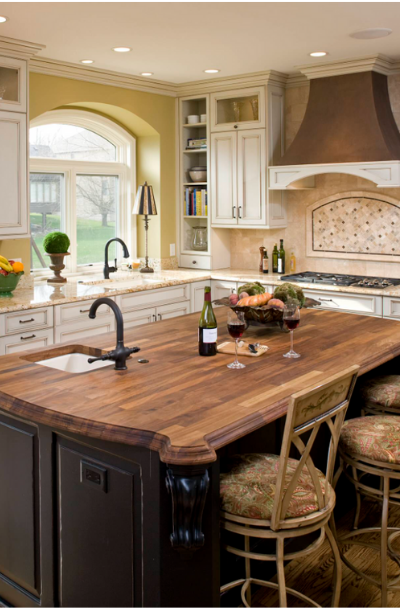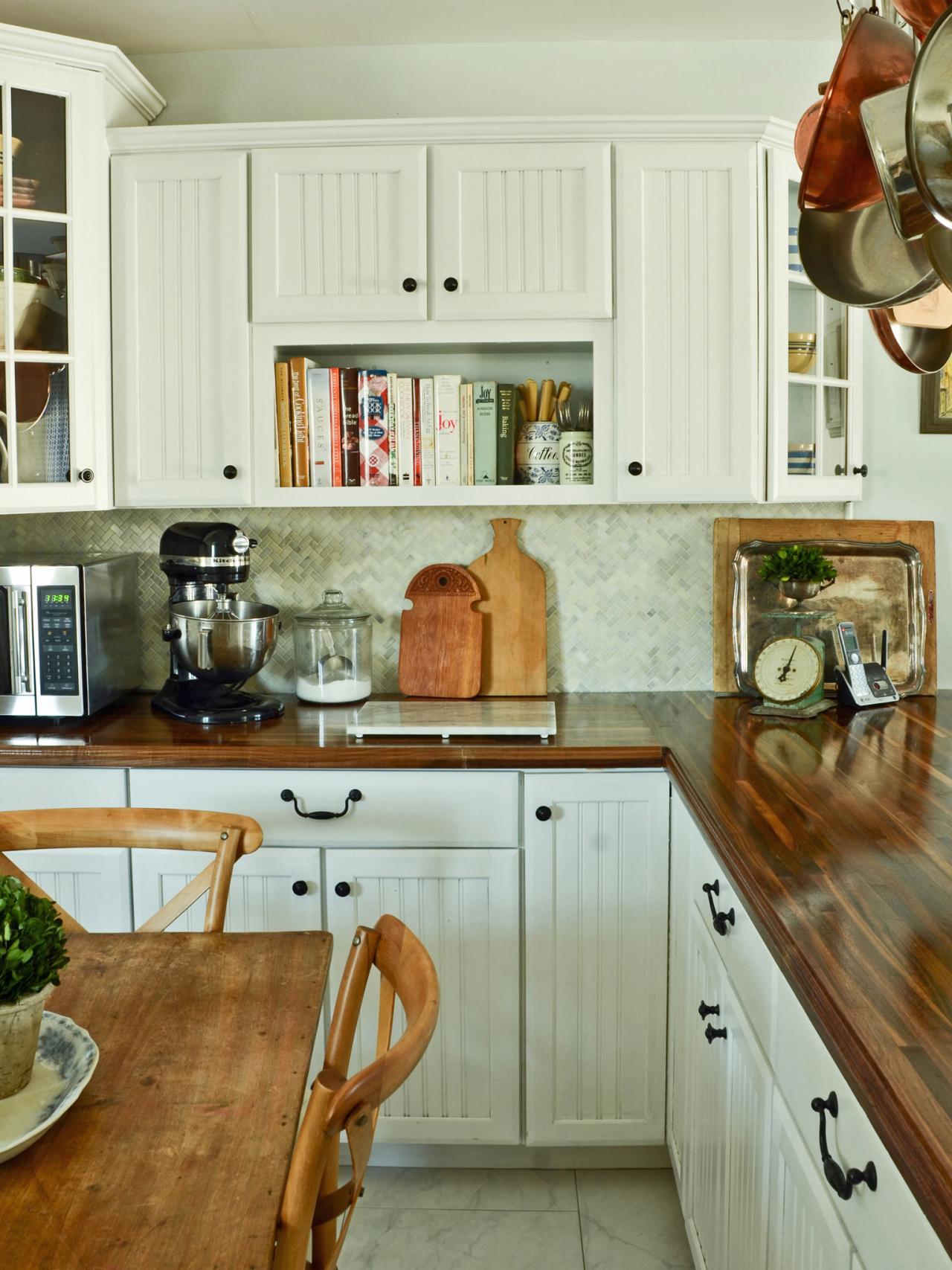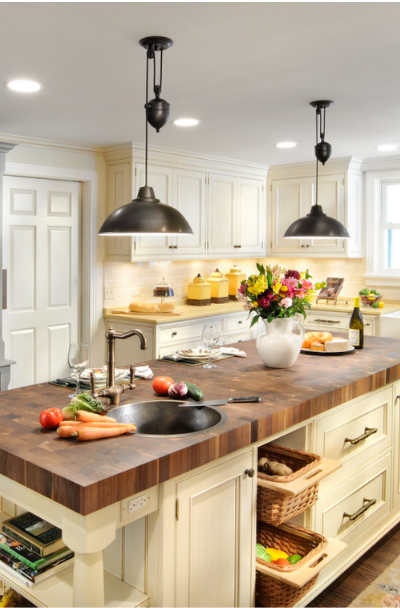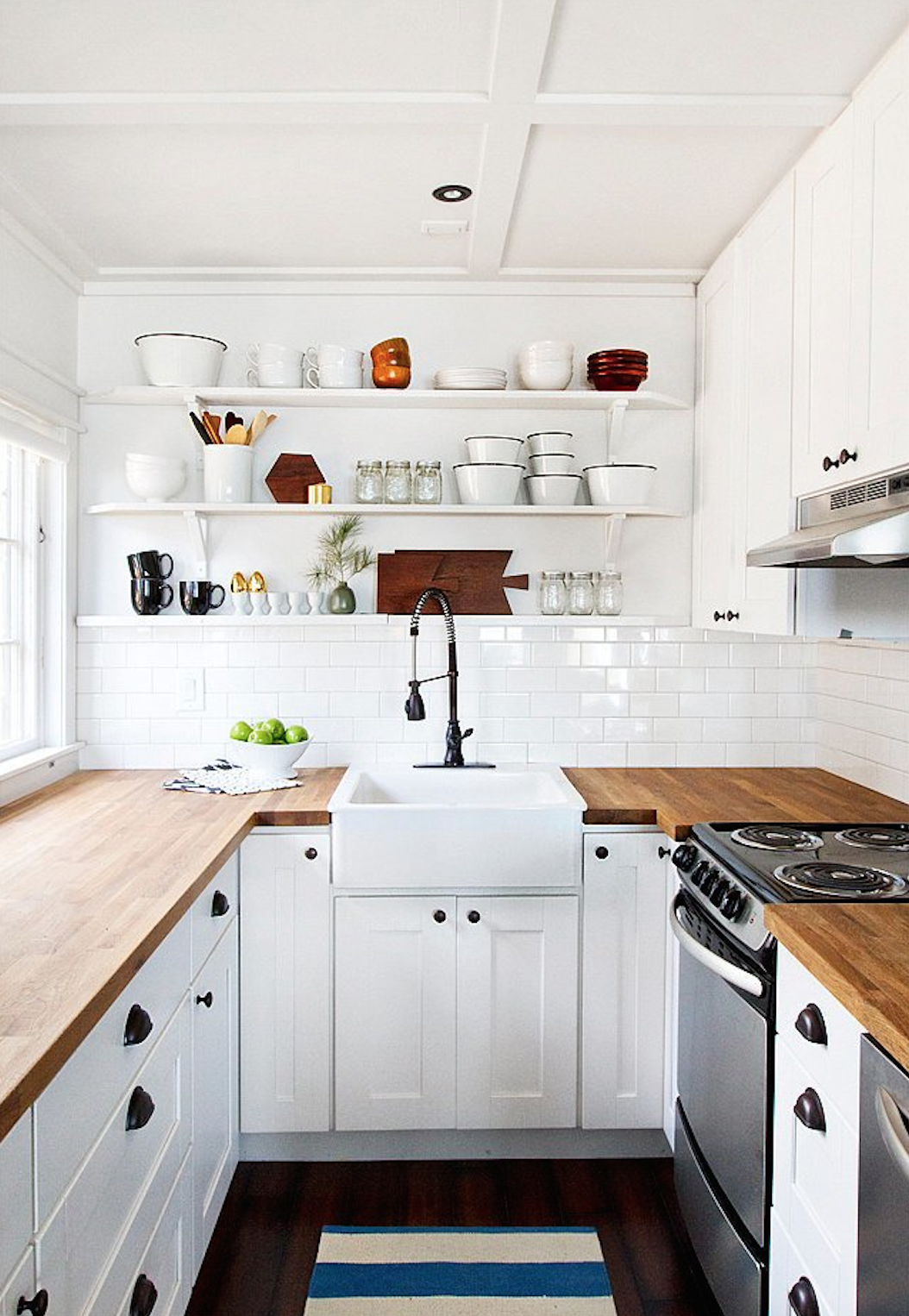Butcher block kitchen countertops have long been cherished for their warmth, versatility, and timeless appeal. Unlike stone or synthetic surfaces, butcher block countertops add a natural, organic element to the kitchen, making it feel welcoming and homely. They are crafted from straight cuts of wood, glued together to create a sturdy, durable surface that can withstand years of use. The wood species used in butcher block countertops vary, with popular choices including maple, oak, cherry, walnut, and teak. Each wood type offers distinct characteristics, such as color and grain pattern, allowing homeowners to select a style that complements their kitchen design.
One of the key advantages of butcher block countertops is their versatility. They can be tailored to suit a wide range of kitchen styles, from rustic and traditional to sleek and modern. The natural beauty of wood can be highlighted through different finishes, such as oil, wax, or polyurethane, which enhance the grain and provide varying levels of protection. For a classic farmhouse look, an oiled finish may be preferred, while a polyurethane finish offers a more contemporary, glossy appearance. The ability to refinish butcher block countertops is another significant benefit. Over time, if the surface becomes scratched or worn, sanding it down and applying a fresh coat of finish can restore it to its original condition.
Butcher block countertops are also prized for their functional benefits. The wood surface is gentle on knives, making it an ideal workspace for food preparation. Unlike harder surfaces, such as granite or quartz, butcher block is less likely to dull knife blades, which is a major advantage for home cooks. Additionally, the warmth of wood makes it a pleasant surface to work on, especially during colder months. The tactile nature of wood can make the kitchen feel more connected to the natural world, creating a cozy, inviting atmosphere that’s hard to replicate with other materials.
Another significant benefit of butcher block countertops is their sustainability. Wood is a renewable resource, and when sourced responsibly, it has a much lower environmental impact compared to stone or synthetic materials. Many manufacturers offer butcher block countertops made from reclaimed or sustainably harvested wood, which further reduces their ecological footprint. This aspect of butcher block countertops appeals to environmentally conscious homeowners who seek to minimize their impact on the planet. The option to choose wood from local sources can also reduce transportation emissions, making it an even more eco-friendly choice.

The customization options available with butcher block countertops are nearly limitless. Homeowners can choose from various edge profiles, such as straight, beveled, or bullnose, to further personalize the look of their countertops. Additionally, butcher block can be stained to match other elements in the kitchen, such as cabinetry or flooring, creating a cohesive design. The thickness of the countertop can also be customized, with thicker slabs providing a more substantial, traditional look, while thinner options offer a sleek, modern appearance. This level of customization allows butcher block countertops to seamlessly integrate into any kitchen design.
Despite their many advantages, butcher block countertops do require regular maintenance to keep them looking their best. Wood is a porous material, meaning it can absorb moisture, stains, and odors if not properly sealed. Regular oiling or waxing is essential to protect the surface from water damage and to prevent the wood from drying out and cracking. Spills should be wiped up immediately to avoid staining, and cutting boards should be used to prevent deep scratches or gouges. However, with proper care, butcher block countertops can last for decades, aging gracefully and developing a rich patina over time.
Butcher block countertops are also a cost-effective option compared to other premium countertop materials. While they may require more maintenance, their initial cost is often lower, making them an attractive choice for budget-conscious homeowners. The ability to repair and refinish the surface also adds to their long-term value, as they can be rejuvenated rather than replaced when they begin to show signs of wear. This makes butcher block countertops a smart investment for those looking to add both beauty and functionality to their kitchen without breaking the bank.

In terms of design, butcher block countertops can be used in a variety of ways to enhance the overall aesthetic of the kitchen. They can be installed as a full countertop, covering all the workspace areas, or used as a focal point on a kitchen island. Combining butcher block with other materials, such as stone or stainless steel, can create a unique, mixed-material look that adds visual interest and texture to the space. For instance, a butcher block island paired with granite perimeter countertops offers a striking contrast that balances warmth and elegance. The versatility of butcher block allows for endless design possibilities, catering to different tastes and preferences.
A common use of butcher block countertops is to create a designated chopping or food preparation area within the kitchen. This can be particularly useful in large kitchens where multiple workstations are needed. By incorporating a butcher block section into the countertop, homeowners can create a functional space that is specifically designed for culinary tasks, making food preparation more efficient and enjoyable. This setup can be further enhanced with built-in knife slots or storage areas, keeping essential tools within easy reach and the workspace organized.
When choosing a wood species for butcher block countertops, it’s important to consider the specific characteristics of each type of wood. Maple is a popular choice due to its durability and uniform grain, making it suitable for heavy use. Walnut, with its rich, dark color and distinctive grain patterns, adds a touch of luxury and sophistication to the kitchen. Oak is known for its strength and prominent grain, offering a more rustic appearance. Cherry, on the other hand, darkens over time, developing a deep, rich patina that adds character to the kitchen. Teak is highly resistant to moisture, making it an excellent choice for areas near sinks or for outdoor kitchens.
Installation of butcher block countertops can be a DIY project for those with carpentry skills, but it’s often recommended to hire a professional to ensure a perfect fit and finish. The countertops need to be properly sealed and secured to prevent warping or movement over time. It’s also crucial to consider the orientation of the wood grain. End-grain butcher block, where the ends of the wood strips are exposed on the surface, is particularly durable and resistant to cuts and scratches, making it ideal for heavy-duty kitchen use. However, it is more expensive and requires more complex installation compared to edge-grain or flat-grain butcher block.

While butcher block countertops are durable, they are not heat-resistant. Placing hot pots and pans directly on the surface can scorch the wood and cause permanent damage. It’s essential to use trivets or hot pads to protect the countertop from heat. Additionally, excessive moisture can cause the wood to swell or warp, so it’s important to keep the surface dry and to promptly address any spills. Regular inspection and maintenance, such as reapplying finish as needed, will help prolong the life of the countertops and maintain their beauty.
Butcher block countertops are also an excellent choice for those who enjoy DIY projects. The ability to sand and refinish the surface allows homeowners to update or change the look of their countertops without the need for a complete replacement. This flexibility is particularly appealing to those who like to refresh their kitchen design periodically. Whether you want to lighten the wood with a whitewash stain or go for a darker, richer finish, butcher block countertops offer the versatility to adapt to your evolving style.
In addition to their aesthetic and functional benefits, butcher block countertops add a sense of history and craftsmanship to the kitchen. The natural variations in the wood grain, the occasional knot or imperfection, and the way the surface ages over time all contribute to a unique, lived-in look that tells a story. This authenticity is something that synthetic materials simply cannot replicate. For those who appreciate the beauty of natural materials and the character they bring to a space, butcher block countertops are an ideal choice.

Common Mistakes to Avoid
When opting for butcher block countertops, several common mistakes can impact their durability and appearance. First, neglecting regular maintenance is a significant error. Failing to oil or reseal the surface can lead to cracks, warping, and water damage.
Using butcher block countertops as a cutting surface without a cutting board is another frequent mistake. While the wood is knife-friendly, cutting directly on the surface can lead to deep gouges that are difficult to repair.
Another common error is placing hot items directly on the countertop, which can cause scorch marks and irreversible damage. Additionally, not addressing spills immediately can result in stains that are tough to remove.
Finally, improper installation, such as inadequate sealing or not allowing for wood expansion, can cause the countertops to warp or separate over time. By being mindful of these mistakes, homeowners can ensure their butcher block countertops remain beautiful and functional for years.

How often should butcher block countertops be oiled?
Butcher block countertops should be oiled every few months, depending on usage and the type of wood. Regular oiling helps to maintain the moisture balance in the wood, preventing it from drying out and cracking. It also creates a barrier that protects against stains and water damage. For new countertops, it’s recommended to oil them once a week for the first month to ensure the wood is well-saturated. After that, oiling every two to three months should be sufficient. However, if the countertop is in a high-traffic area or frequently used for food preparation, more frequent oiling may be necessary. The best way to determine if your countertop needs oiling is to check if water beads up on the surface. If it doesn’t, it’s time to reapply oil.
Can butcher block countertops be used around sinks?
Yes, butcher block countertops can be used around sinks, but they require special care to prevent water damage. It’s crucial to ensure that the wood is properly sealed to protect against moisture. Regular maintenance, such as reapplying a water-resistant finish, is essential to keep the wood in good condition. Additionally, it’s important to wipe up any water spills immediately and to avoid leaving wet items on the countertop for extended periods. While butcher block can add warmth and beauty to areas around sinks, it’s important to be diligent about maintenance to avoid issues like swelling, warping, or mold growth. For those concerned about water exposure, opting for a more moisture-resistant wood species, such as teak, can be a good solution.
How do I remove stains from butcher block countertops?
To remove stains from butcher block countertops, start by sanding the affected area with fine-grit sandpaper, moving in the direction of the wood grain. This will remove the top layer of wood and with it, the stain. After sanding, clean the surface with a damp cloth and allow it to dry completely before applying a fresh coat of oil or finish. For tougher stains, such as wine or ink, you can try using a mixture of baking soda and water to create a paste, applying it to the stain, and letting it sit for a few minutes before scrubbing gently with a soft cloth. It’s important to avoid using harsh chemicals or abrasive cleaners, as they can damage the wood. Regular maintenance and prompt attention to spills will help prevent stains from setting in the first place.

Can I install butcher block countertops myself?
Yes, it’s possible to install butcher block countertops yourself, especially if you have some experience with carpentry. However, it’s a task that requires precision, particularly when it comes to measuring, cutting, and sealing the wood. The installation process involves securing the countertops to the base cabinets, cutting out areas for sinks or appliances, and ensuring that the wood is properly sealed to prevent moisture damage. If you’re confident in your DIY skills, installing butcher block countertops can be a rewarding project. However, if you’re unsure or the installation involves complex cuts or fitting, it’s advisable to hire a professional to ensure a flawless finish. Proper installation is key to the longevity and performance of your butcher block countertops.
What’s the difference between end-grain and edge-grain butcher block countertops?
End-grain and edge-grain refer to the orientation of the wood pieces used in the construction of butcher block countertops. End-grain countertops are made by arranging the ends of the wood strips facing up, creating a checkerboard pattern. This orientation makes the surface extremely durable and resistant to cuts and scratches, as the wood fibers absorb the impact of knives. End-grain butcher block is often used in professional kitchens for heavy-duty chopping. However, it is more expensive and labor-intensive to produce. Edge-grain countertops, on the other hand, are made by arranging the wood strips with their edges facing up, resulting in a striped appearance. This type of butcher block is more common and less expensive than end-grain, but it is also slightly less durable. Both types offer distinct aesthetics and benefits, so the choice depends on your specific needs and preferences.
Can butcher block countertops be refinished?
Yes, one of the greatest advantages of butcher block countertops is that they can be refinished. Over time, the surface may develop scratches, stains, or wear from regular use. Refinishing involves sanding down the surface to remove any imperfections and then applying a new coat of oil or finish to restore its appearance. This process can be repeated multiple times over the lifespan of the countertop, making it a long-lasting and sustainable choice. Refinishing allows homeowners to refresh their kitchen’s look without the need for a full countertop replacement. It’s important to follow the manufacturer’s instructions or consult a professional to ensure the refinishing process is done correctly and the countertop is properly sealed afterward to protect against moisture and damage.

All About Butcher Block Countertops

The timeless style of butcher block countertops looks great in

Related articles:
- Butcher Block Countertop For Kitchen Island
- Can You Paint Butcher Block Countertops
- Butcher Block Countertops With White Cabinets
- Pine Butcher Block Countertops
- Butcher Block Countertops Walnut
- Maple Butcher Block Countertops
- Care Of Butcher Block Countertop
- Butcher Block Countertops Maintenance
- Antique Butcher Block Countertops
- Butcher Block Countertop Sealing